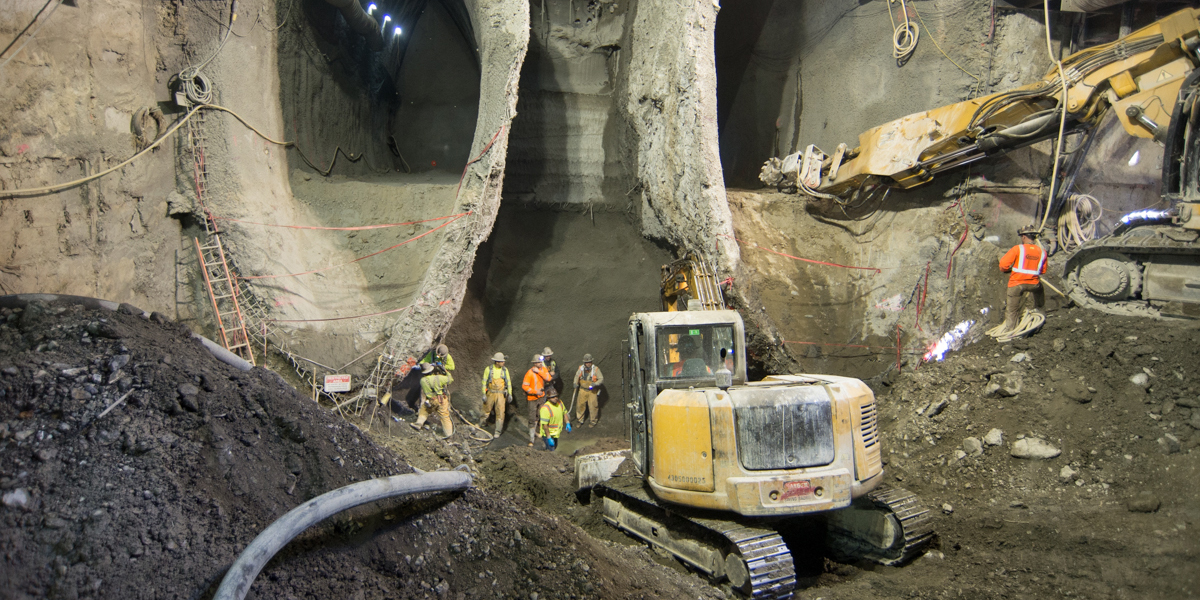The Ultimate Guide To Demolition
Wiki Article
Excavator Fundamentals Explained
Table of ContentsNot known Details About Trencher Getting The General Contractor To WorkAll about ExcavatorThe Single Strategy To Use For Mini ExcavatorAn Unbiased View of Excavator


Scrapers or Pans excavate dirt in one place, haul and also discard the dirt in an additional place (demolition). It is difficult to match the effectiveness of scrapers for cut/fill dirt operation if the haul range is much less after that a mile. Scrapers are generally pulled by a rubber tire wheel tractor as well as are sometimes pushed through the cut area by a bulldozer.
There are several times that scrapers are not utilized for site grading and a dump vehicle is employed: the haul might be to long, the haul might cross roads where scrapers are not allowed, difficult rock might be experienced, equipment availability, and so on. Dispose trucks are in common usage and also most likely call for little discussion.
Numerous trucks have a top-hinged tailgate that can not unload any type of rock bigger after that the tailgate size. "Rock body" beds, on the other hand, have no tailgates and also can dump any dimension rock, although their quantity capacity is reduced. These internet links reveal equipment specifications for a number of typical dump vehicles. Compaction Devices increases the density of the soil as well as sometimes offers a smooth, rolled surface.
All About Demolition
From an easy test pit to percussion boring to core boring the owner has increasingly more expensive options that produce significantly much better information regarding the website underground. The Owner on a 100,000 SF structure task might authorize twenty uninteresting places with split spoon soil samples taken till rock is gotten to as well as then core examples of rock.Knowing the type and high quality of rock (from the core examples) as well as location of rock (from the dirts boring) is an actual benefit in jobsite preparation. Conversely, the Proprietor of a 100,000 SF building might determine to wage no geotechnical screening whatsoever. The choice about geotechnical testing is typically made by a Proprietor with no input from the Building Supervisor.
The area on Dirts and Geology assists you comprehend the terms in the geotechnical report. An expertise of the approximate area of the rock aids the Building Supervisor to plan the series of actions complying with rock excavation. If rock is in one corner of a large structure task, for example, the earth excavation can start at the opposite end of the structure in order to begin structure work soonest.
Beginning the structure job early would be a great idea if the rock could be eliminated by ripping. Nonetheless, if the rock is exceptionally hard as well as requires considerable blasting, it may be prudent to hold structure job until the blasting is completed. The Building and construction Supervisor should collaborate these sorts of choices and also utilize all the technological date offered.
10 Easy Facts About Excavator Described
Unclassified excavation specifies that all rock or other unforeseen products (excluding dangerous products) encountered in the sitework will certainly be the duty of the Professional at no change in agreement cost. An unidentified excavation is less complex from a book-keeping perspective as well as positions the responsibility for geotechnical conditions onto the Sitework Specialist.Just How Water Influences Sitework? It's fantastic what a hefty rain can do to a construction project. Prior to the rain, the site may be dry, hefty tools successfully relocating earth, the other trades smoothly doing their work. Within hrs the project can be a careless, mud-hole with worker performance reduced to concerning 10%.
In many areas of the globe, browse this site the Construction Manager must remember an easy fact: IT WILL RAINFALL. Excellent preparation can lessen the damage and disruption of More about the author a hefty rainfall to a jobsite. Frequently the excavation and also grading is delegated the Sitework Specialist (as well as their Foremen is accountable to monitor and route the hefty devices and operators).
The Building Supervisor must be continuously conscious of what rain will certainly do to the job website. It is not uncommon for the Sitework Supervisor to work their hefty devices for optimal effectiveness and wish it doesn't rain. Among the best means to get ready for rain is to slope all qualities to drain pipes as well as to smooth rolled the surface before a rain.
Excitement About Trencher
The Building Supervisor should be well-balanced sufficient to insure that heavy rainfall does not quit working on the task longer than required. Daily discussions with Sitework Foremen might be required to achieve this goal. Any type of time excavation is required below the existing water level on a project, the procedure of dewatering have to be taken into consideration.In a truly cohesive soil, the water travels so slowly through the clay or silt that dewatering is not usually required for the fairly short time of excavation. Dewatering may be required for a single ground excavation or for a whole job site. The most usual dewatering approaches are trench drains, excavator hire deep wells and also well points.

Ground water seepage can likewise be decreased by cutoff techniques such as sheet piling. High dewatering costs have actually paled the earnings margins on far as well many jobs.
This alternative should always be taken into consideration when evaluating the possibility of dewatering. Obviously the option is just sensible if gravity can run the water to reduced ground. Trench drains can be reduced with a backhoe and also loaded with a coarse, granular material (# 4 stone for instance), yet treatment should be worked out in picking the water electrical outlet type and place.
Not known Facts About Mini Excavator
A siphon, necessarily, uses climatic pressure to bring water from one altitude, up over a challenge, to a reduced elevation. The pipelines in a siphon system must be closed and some resourcefulness is typically called for to entirely fill up the siphon pipeline. The siphon pipeline must be complete for the siphon to begin.A deep well contains a pump, hose as well as an upright well casing. The pump intake is at the bottom of the well covering (normally some smashed stone is put there as a filter medium) (mini excavator). The water is inflated the hose, out of the well housing, and also to a suitable discharge location.
In a rugged sand, for instance, a huge area can be pumped to near the pump intake altitude. A much less absorptive dirt, on the other hand, decreases the performance of a deep well. Since the pump is typically at the end of the deep well, there are no elevation constraints due to vacuum lift, and deep wells can reduce the groundwater over 50 feet.
Under of the wellpoint there is a 2 foot long display and also shutoff, water jets out of this shutoff and also creates an opening into which the wellpoint pipe can be reduced. This opening is frequently made a larger diameter (for example 10 inches) to permit a rugged sand backfill to assist filter the water (concrete contractors).
Report this wiki page